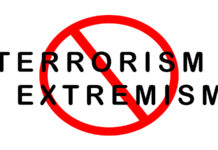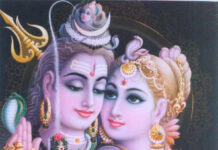The Supreme Court has once again proved that it is guided by colonial mindsets and woke liberalism, both of which seek to dismantle Hinduism one way or the other. This is what it demonstrated yesterday (12 April) when it decided that it will not wait for the KG Balakrishnan panel before deciding whether to extend the benefits of quotas to Dalit Christians and Muslims.
By R Jagannathan
Now, no matter which way the court decides, Hindu society will be under renewed pressure, if not the loser. If the court says only Hindus can get reservations, Hinduism will continue to be castigated for allowing caste to work against social justice.
In the opposite case, Hindu society will be forced to operate with its back to the wall, where past and future converts will derive a double advantage: they will not only gain from the act of conversion (with all its lures), but also from reservations in higher education and jobs.
Hindu society will be targeted and sought to be destroyed from within by reducing it to caste, caste and nothing but caste.One must, however, acknowledge that there is an anomaly in reservations for the Scheduled Castes (SCs).
Unlike Other Backward Classes (OBCs) and Scheduled Tribes (STs), where caste and not religion forms the basis for reservations, in the case of SCs alone the reservations are based on whether an SC is part of Hinduism or not.
The anomaly lies in the fact that while Hindus are held guilty for discrimination, the same logic will not be applied to discrimination within Christian and Muslim OBCs and STs.
This anomaly is an unintended fallout of the Gandhi-Ambedkar Pact of 1932, also called the Poona Pact, where Gandhi, in order to protect Hindu identity, fasted to get Babasaheb Ambedkar to abandon his demand for separate electorates for SCs (or depressed classes, as they were called at that time).
Ambedkar was bitter and called this blackmail, and one must agree with him, for the pact was not something he wanted to agree to.
But if there is one decision of Gandhi which Hindus can be thankful for, it is this one. It prevented a vertical division of Hindu society by forcing both the upper castes and the SCs to work together.
This pact found its resonance in the Constitution, when reservations were reserved for Hindu Dalits and other members of Indic religions (ie, Buddhism, Jainism and Sikhism, but not Christians and Muslims).
Thus, conversions within the Indic fold were not to result in any loss of quota benefits.
We cannot know whether the Gandhi solution was better or the Ambedkar one, for if SCs had indeed been given separate electorates, logically it should have included the SCs from the Muslim and Christian communities too.
We don’t know if Pasmanda Muslims and Dalit Christians would have followed Ambedkar or their respective religious leaders.
We can only speculate on what could have happened if Ambedkar had gotten his way, for the Poona Pact paved the way for special quotas for SCs within the context of Hindu society.
If the Supreme Court were to now dismantle the Poona Pact, the damage to Hindu society will be obvious, but whether Muslim and Christian Dalits will now find different leaders who are based on caste rather than religious affiliations is unclear.
It is more than likely that only Hindus stand to lose.
Clearly, whatever the three-judge Supreme Court bench, headed by Justice Sanjay Kishan Kaul, does, it will open up new fissures in Hindu society.
The only question is whether this development before the 2024 general election will force the Narendra Modi government to abandon its wishy-washy stand on Hindutva and Hindu interests or not.
Especially since it has been making many efforts to reach out to Christian and Muslim constituencies.
If Sabka Saath, Sabka Viswas only means protecting the interests of the minorities at the cost of Hindus, Modi and the BJP will lose their primary reason for existence: that they exist to protect Hindutva and Hindu interest without denying the rights of the rest.
When the issue of reservations for Dalit Christians and Muslims first came up in the Supreme Court, the government put up a weak defence against it by saying that the recommendation of the Ranganath Mishra report (to extend reservations to these Dalits), was done without any field studies.
The Solicitor General told the bench: “It was written within the four walls of a room. There was no field study done… The Commission (Misra) took a myopic view of the social milieu in India.”
This is nothing but evasive. The government should have made two bold points.
First, the Ranganath Mishra report of 2007 was a political project of the UPA (United Progressive Alliance), which was decidedly pro-minorities and anti-Hindu. The court has no business deciding if a politically-loaded report is valid or not.
Unfortunately, the three-judge bench has said it will look at the Mishra report on its own terms. The K G Balakrishnan panel, which is the Modi government’s own political response to the issue, will be sent straight to the shredder, for, by then, the court may have made its decision.
Second, in the context of the Poona Pact, when it was decided that discrimination against Hindu sects was a problem for Hindu society to solve, why should the courts intervene at all?
Discrimination against Muslim and Christian Dalits is for those communities to solve within the context of their own resources. If Christians and Muslims practise their own forms of casteism, should that not be the core of the issue?
Justice Ahsanuddin Amanullah, who is part of the three-judge bench, suggested that social stigma cannot be equated with religion.
He said: “Social stigma and religious stigma are two different things. I may convert to a different religion for very different purposes. But if the social stigma continues, that is why reservation came in for the Scheduled Castes. Then why can’t the court determine whether under the Constitution such compartmentalisation is permissible or not? At the ground level social stigma may continue even after conversion…We cannot shut our eyes when we are considering all these constitutional matters.”
This is rich. If the stigma is social, clearly Hinduism as religion cannot be blamed for evils like untouchability or caste-based discrimination.
Something that developed in the context of India’s social evolution cannot be attributed only to one religion.
Then why should Hinduism alone carry the burden of guilt on this score? Why are Islam and Christianity not held to account for the discrimination they practise against their own Dalits when their religion supposedly does not call for it?
Clearly, the Abrahamic religions are playing both sides of the argument. It suits their purpose to blame Hinduism for casteism, but they are also unwilling to accept that conversion does nothing to solve this social problem.
They will then be forced to admit that Islam and Christianity also practise caste-based social discrimination within their own community?
Can the Supreme Court allow such double-speak by referring to the problem as unrelated to Islam and Christianity?
This is the time for all sections of Hindu society, whether based on caste or region, to band together to see the writing on the wall: they face decimation both at the hands of the courts and politicians who can see no further than the next election.
In the name of social justice and to win votes, they will throw Hindu interests down the drain.
Hindu society has been repeatedly let down by its own leaders, who have put narrow self-interest above group interest. Will the Supreme Court’s decision to meddle in something it should not be meddling in convince Hindus that they should either hang together or hang separately.
The only thing that the Modi government should be doing is to put it bluntly to the court: the issue is about dismantling Hindu society, not social justice. Does the Supreme Court want to be a party to that?
This article first appeared in www.swarajyamag.com and it belongs to them.












